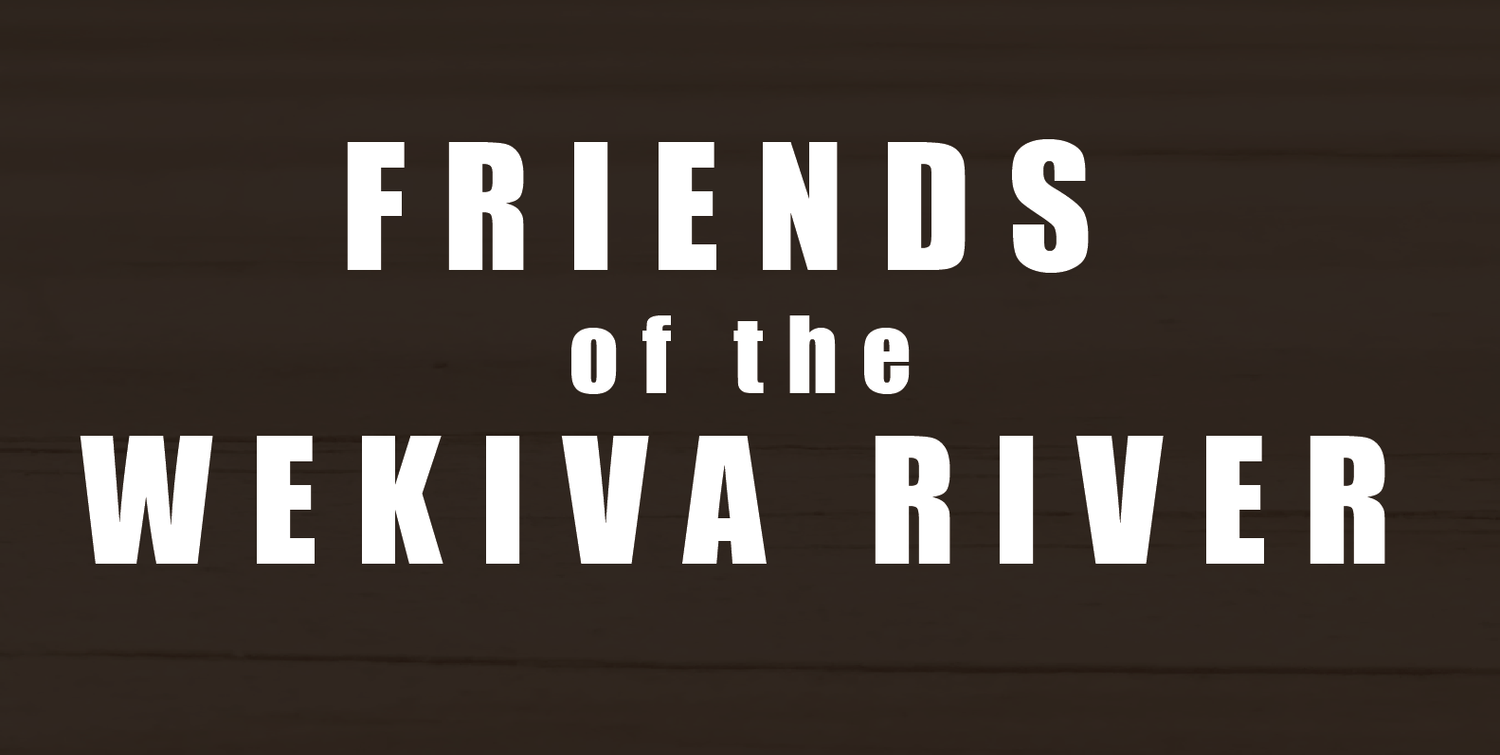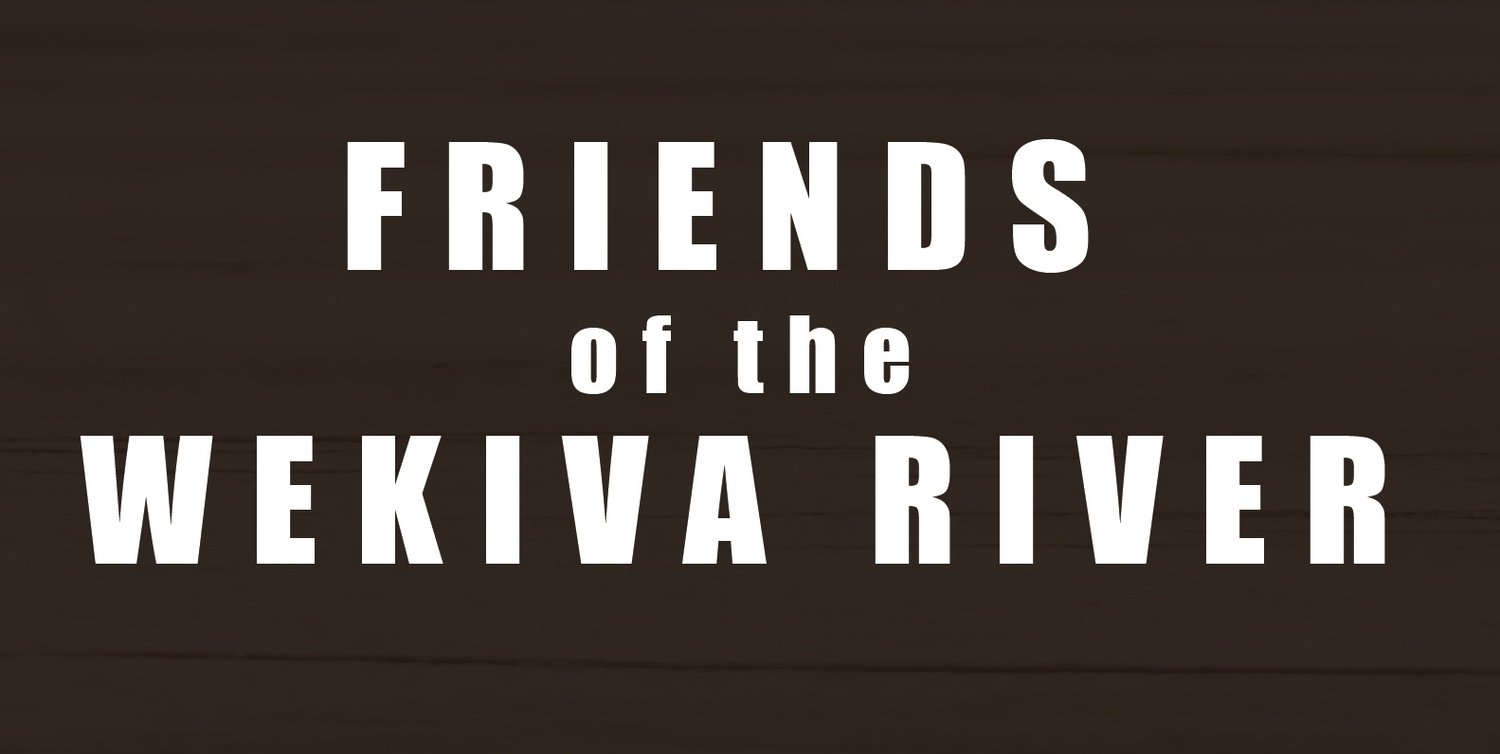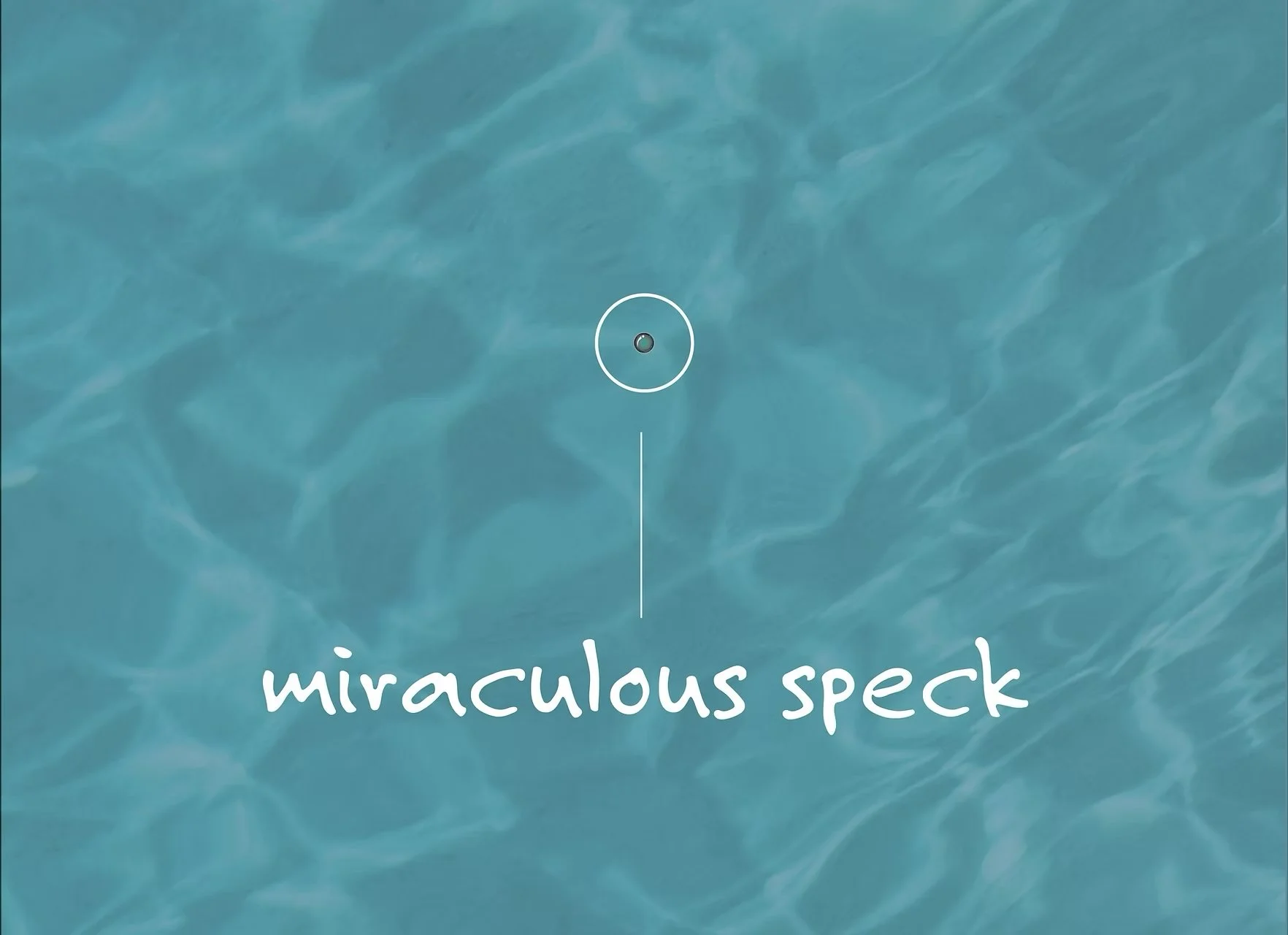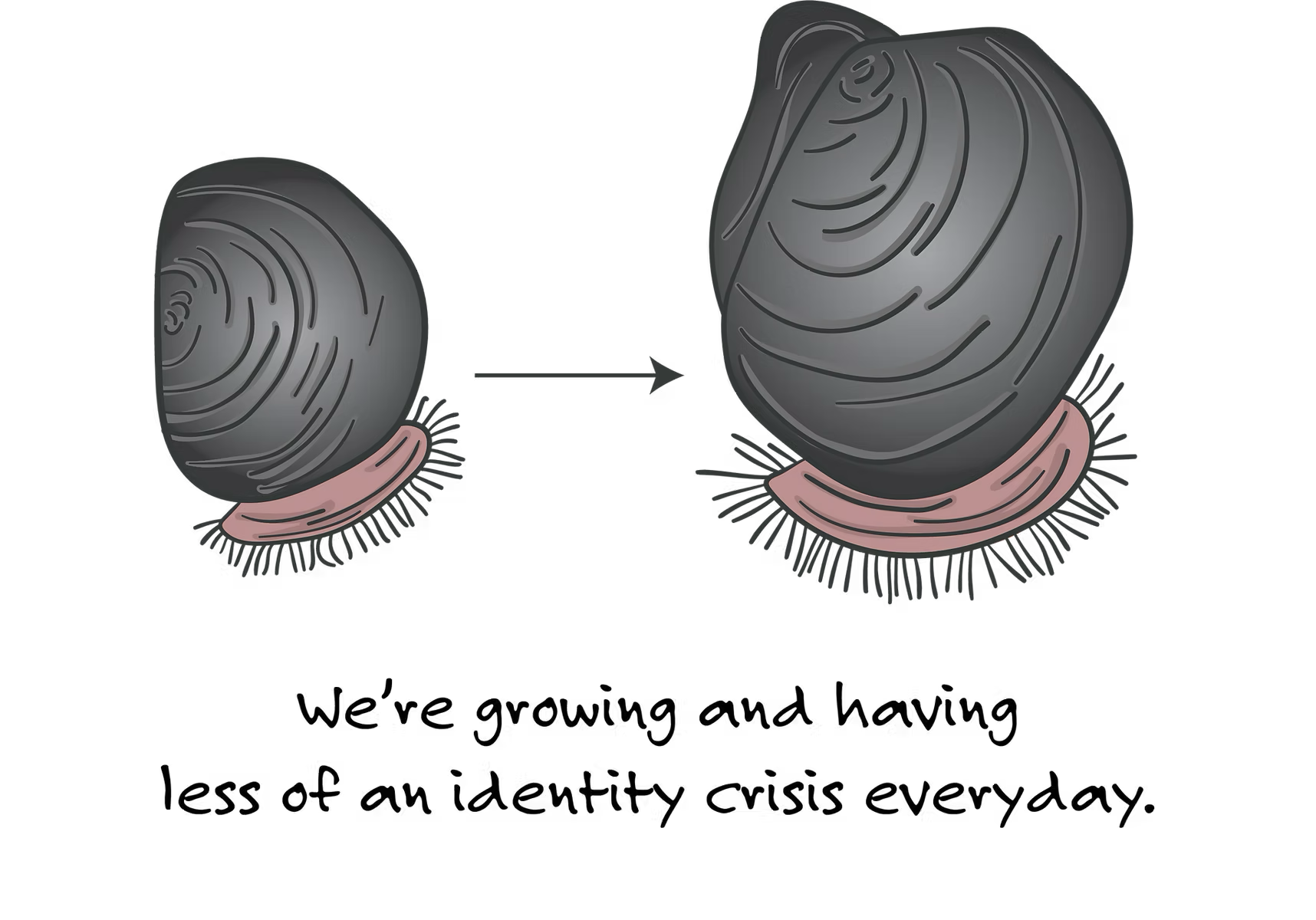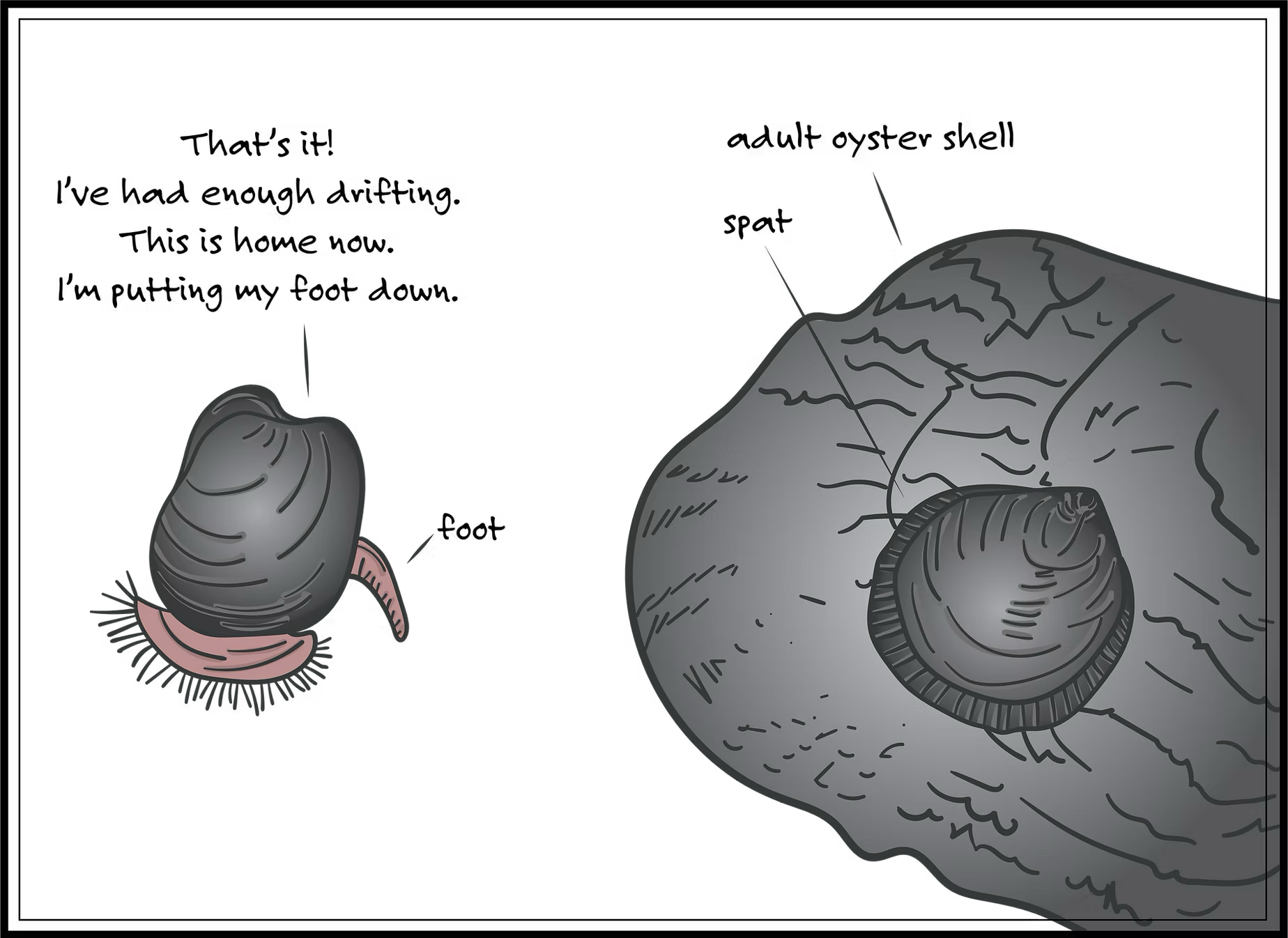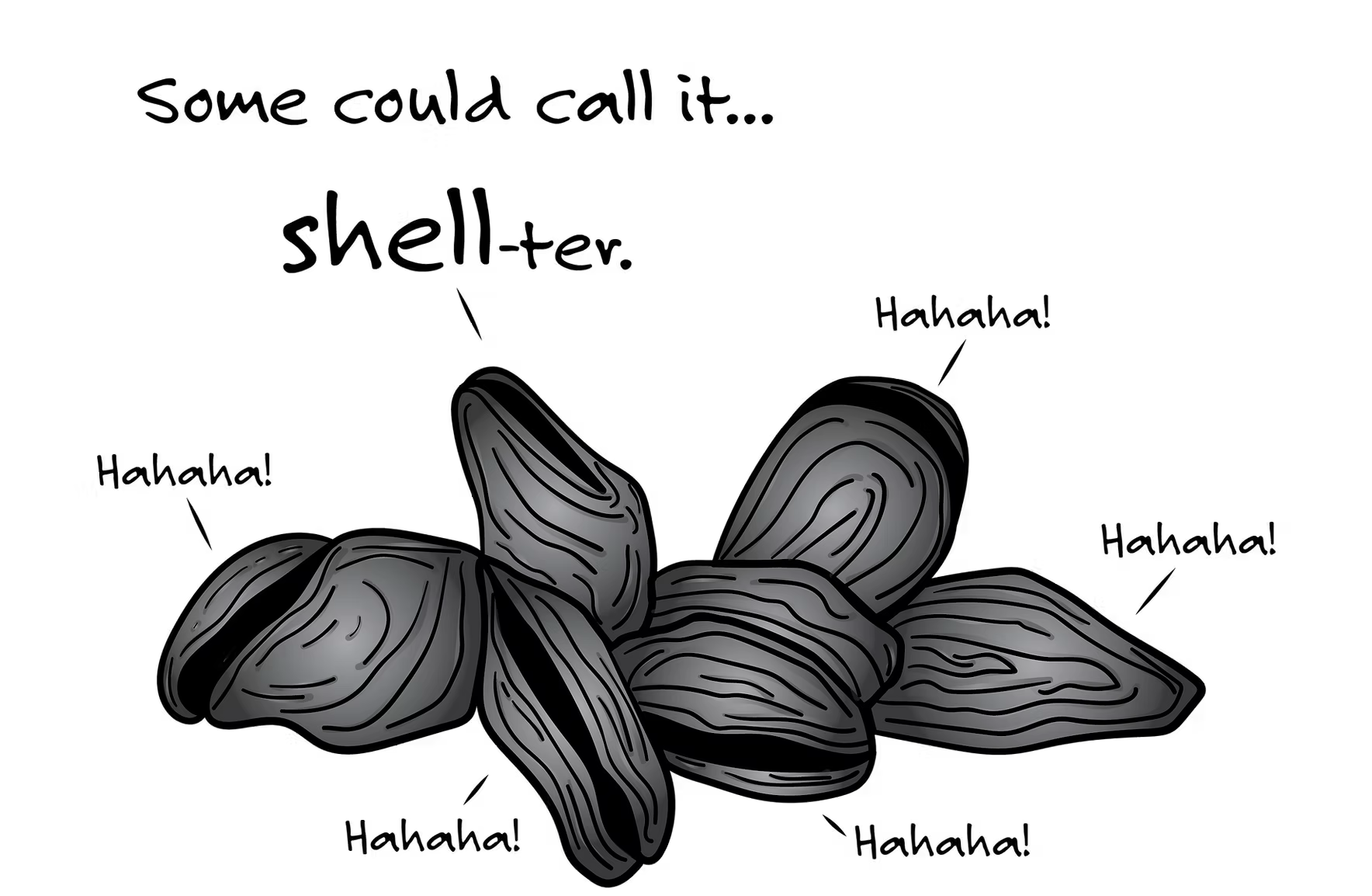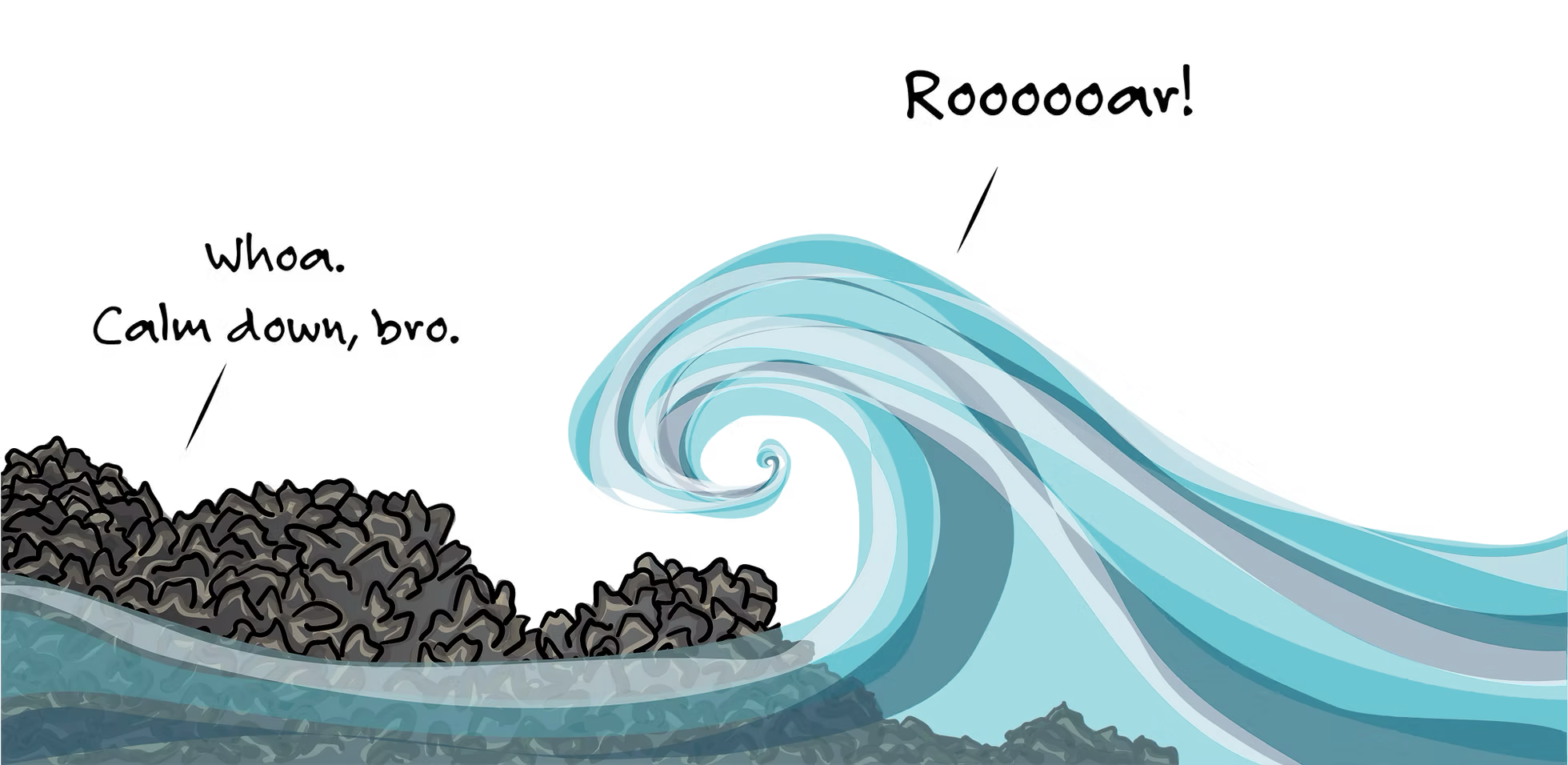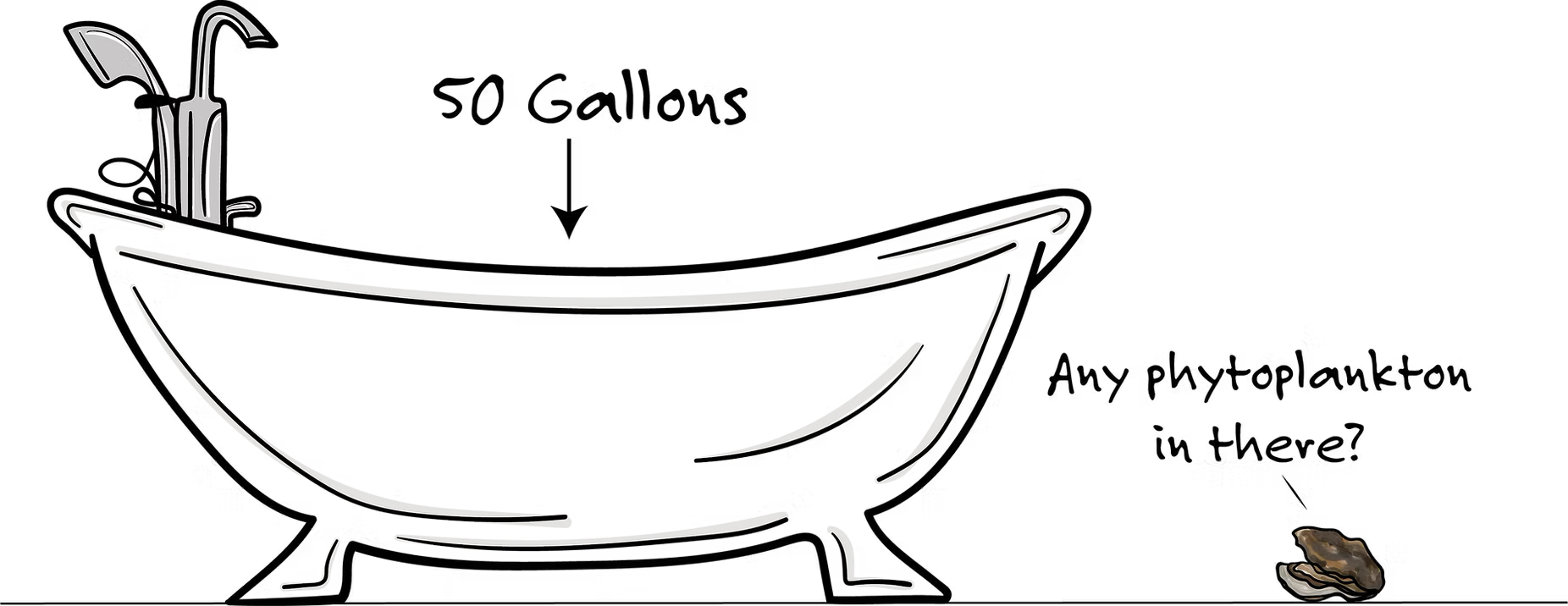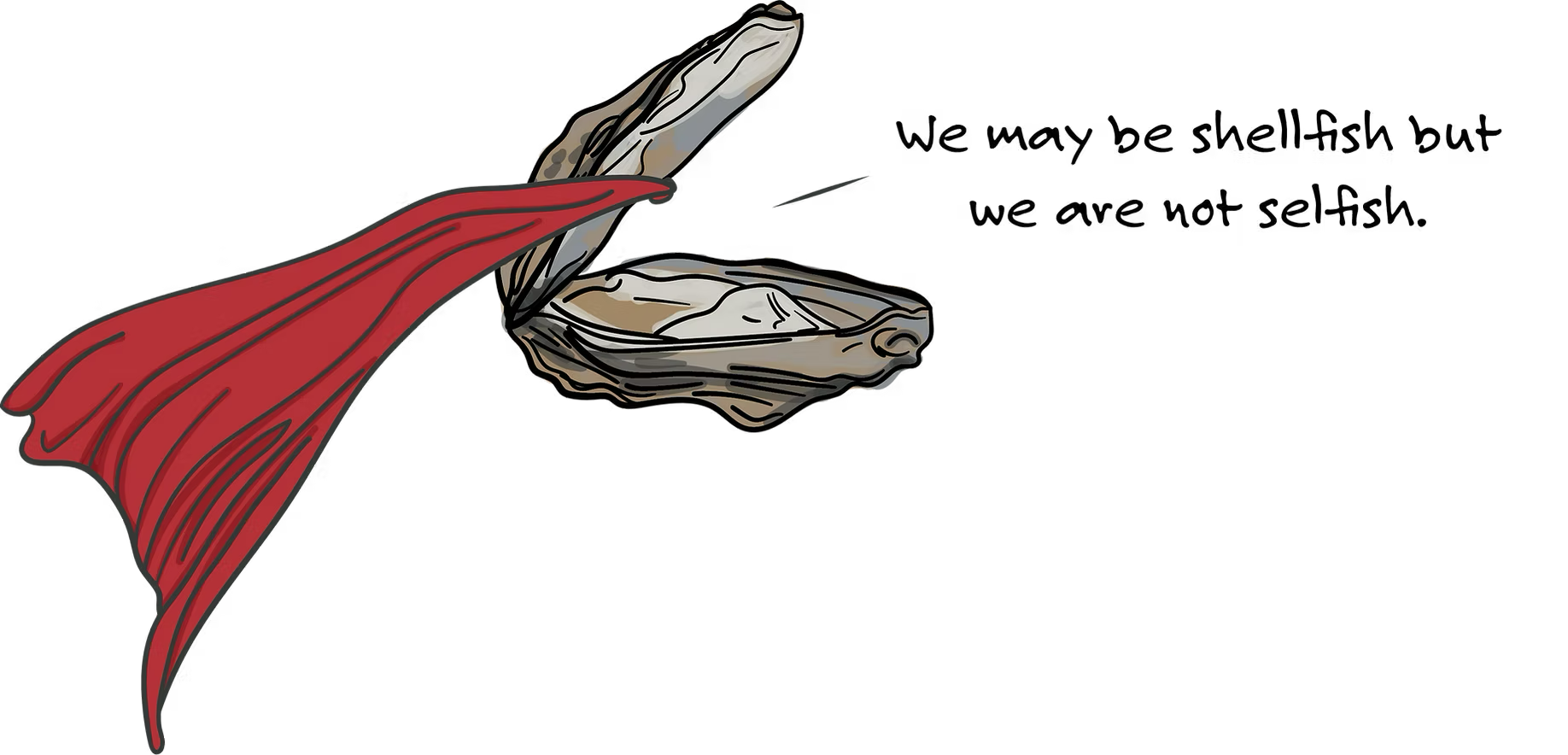Eastern Oyster
(Crassostrea virginica)
Drifting along the current in the quiet, shallow waters of the
Atlantic Ocean and Gulf of Mexico, you can find a miraculous speck.
The speck is one of millions found in the waters where fresh meets salt.
Those brackish and saltwater bays, estuaries, creeks and intertidal zones are where a speck can grow up to be a hero.
But first it has to survive.
The speck is a teeny-tiny oyster egg.
It only takes six hours for that tiny fertilized egg speck to transform into a slightly larger speck – a tiny, free-swimming, planktonic oyster larvae.
Along with millions of other planktonic specks, oyster larvae are at the mercy of a vast water column and many predators.
But they do have some good things going for them.
Oysters are protandric (starts as male and then changes into female) hermaphrodites (one oyster can produce baby oysters by itself).
But usually they have the help of other oysters producing millions of eggs to make up for loss since most will get washed away to unfavorable habitats or eaten before they reach adulthood.
They can live for up to twenty years but most don’t survive past six.
The larvae that do survive over the next two to three weeks start developing a shell and begin to resemble mini oysters as they float around in the current.
When it’s time to settle down they search with their
newly developed foot for something hard to attach to, like
mangrove roots, sea walls, docks, other oyster shells and artifical oyster reefs made by Marine Discovery Center volunteers.
Oysters glue themselves (using a cement-like substrate) to their new home,
where they will stay and grow for the rest of their lives.
Once attached their name changes:
The miraculous speck is now a spat.
A living reef is formed when spats fuse together with other live oysters and oyster shells. Reefs make excellent habitats not only for oysters but for a host of other marine life. They provide shelter, nursery grounds, food and plenty of biodiversity and prey for fish, bigger fish, mussels, barnacles, anemones, crabs, turtles, birds
and your uncle, you know, the one with the fishing boat.
The reefs also protect shorelines by creating a natural barrier which slows the force of waves and erosion, keeping sediments (and houses) from washing away, especially during big storm events.
Oysters can also clean large amounts of water in a pretty short amount of time just eating and breathing. They pump water in and over their gills to breathe oxygen and trap bits of algae, organic particles and phytoplankton to eat.
Filter feeding helps reduce excess algae, sediment, nitrates, ammonia, phosphates, detritus, bacteria and other pollutants leaving the water much cleaner.
An adult oyster can filter 50 gallons of water each day.
Oysters have economic value too. Throughout human history they have been used as currency, road and building construction material, and as water treatment solutions to help remove pollutants.
They are a big part of the global seafood industry. Farmed and wild harvested oysters are a popular delicacy, rich in protein, vitamins, and minerals. Out of the over two hundred species of oyster around the world only five are still commercially harvested, including the Eastern Oyster.
The pearl industry also loves oysters. Pearls come in a variety of sizes, shapes and colors and are the only gem formed inside a living creature.
Oysters have three-chambered hearts, colorless blood and
no brain. Having two shells makes them bivalves.
They can close their shells tightly and stay alive out of the water during low tide for up to two weeks! Sometimes noises makes them close up too. When they shut tight to hide from the outside world we should really call them bye bye-valves.
Oysters have been around for 15 million years!
But in more recent times we’ve lost 80% of the world's oysters to pollution, dredging, disease, over harvesting, changing ocean conditions, freshwater discharges, erosion from development and wetland loss.
But they are making a comeback thanks to the help of programs
like Shuck and Share which collects discarded oyster shells from restaurants and use them to build and restore oyster reefs. Protected sanctuaries are also essential, giving oyster populations a chance to recover and spread past those boundaries.
Oysters are amazing.
They provide shelter, habitat and food for countless species.
They improve water quality.
They contribute economic value.
They protect shorelines.
All this makes them a keystone species. Their ecosystem depends
on them. We depend on them. Whether we know it or not.
Oysters are the true heroes of the marine world.
It's truly astounding that something that starts life as just a speck
and grows a few inches long, could play such an outsized role
in maintaining the health of our oceans.
Let's all hope that oysters continue to make a global comeback,
even bigger than Cher, and may they thrive as heroes that
save the bay for another 15 million years and beyond.
This comic was Michelle Jamesson’s final project for the Florida Master Naturalist Program - Coastal Systems.
Hosted by the Marine Discovery Center.
